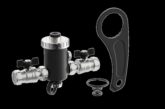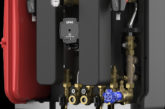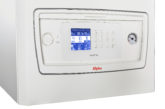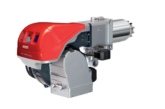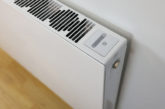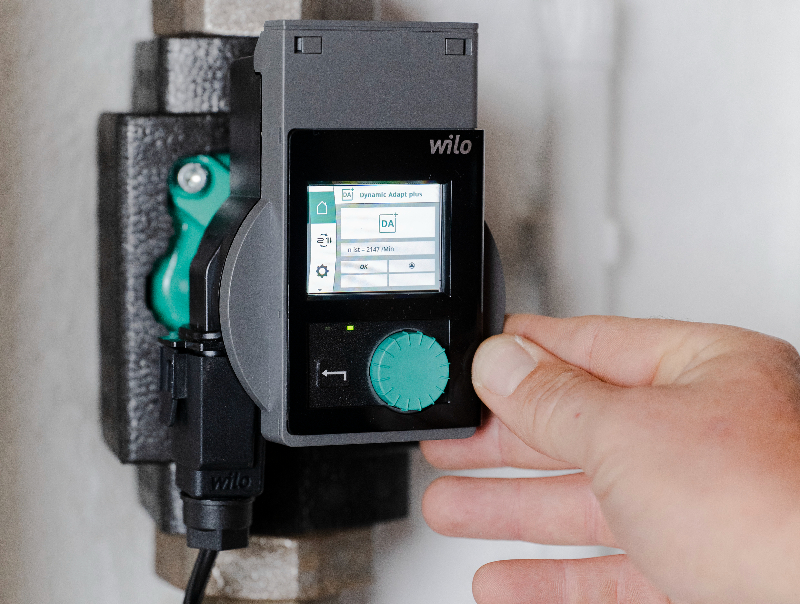
Andy Thompson, National Sales Manager at Wilo UK, outlines the key considerations when choosing a heating circulation pump, and how the right solution can benefit both installer and end-user.
Often referred to as the ‘heart of the heating system’, circulation pumps are only growing in popularity. They work by pumping heated water through a building’s pipework, which is then released into rooms through traditional radiators or appliances such as underfloor heating.
It’s important to remember that not all heating circulation pumps are the same, thanks to several aspects that set models apart. Installers are encouraged to carefully consider the range of pumps available on the market, not only for the customer’s benefit of long-term heating efficiency, but also for ease of installation.
Out with the old…
A key difference noticeable with newer heating circulation pumps is the use of electronically commutated (EC) motor technology, which allows the pump to operate at a variable speed in accordance with demand. Older models, typically powered by an alternating current (AC), work at a fixed speed, meaning they consume more electricity as they are unable to lower consumption during operation.
Thanks to advances in technology and user controls, the speed of EC motors can be adjusted. As a result, higher energy savings could lead to the pump paying for itself within two to three years. With many consumers continuing to seek ways to cut down on energy costs, opting for a new heating circulation pump is one of the more viable ways to keep the bills down amid the ongoing global energy crisis.
Selecting a pump
Choosing the right heating circulation pump for a job can depend on a number of factors. Installers should ensure that the new pump is compatible with the existing heating system and has the right delivery head and volume flow. If the pump is ‘smart’, then it should be able to adapt to the building’s actual heating requirements to provide maximum energy efficiency.
Many new pumps now come with a variety of physical features and add-ons to benefit both the customer and installer. For example, some models, like the Stratos PICO, come with a thermal insulation shell as standard to save installers spending time lagging the product. To make the task even simpler, the Stratos PICO comes with a Wilo-Connector, a mains connection cable that requires installers to strip three wires down, pop them into the correct terminal, snap the terminal shut to hold the wire in place and then pop the cover on. The last thing any installers wants is to be crouched in tight spices while working with tricky electrical terminals, so considering how easy it is to connect the pump up electrically is a must.
A smart choice
The physical appearance of pumps has changed, primarily for the benefit of installers. Large colour displays now make programming a straightforward task at the source of the pump. Gone are the days when installers would face the long task of working in tiny airing cupboards which would inevitably lead to back and joint pain.
Following a recent Water Regs UK survey of 200 plumbing installers outlining that almost three quarters experience joint aches and back pain, it’s clear that change is needed. Fortunately, the newest pumps, like the Stratos PICO, are much smaller than their older counterparts, allowing for an easier fit and navigation of the existing pipework, dramatically reducing the time spent in a tight space.
Wilo’s latest heating circulation pumps come equipped with Dynamic Adapt Plus as the default setting. Once the product has been fitted, the Dynamic Adapt Plus smart feature automatically adapts to the requirements of the heating system, drastically cutting the time needed to set up the pump. Pre-set applications make choosing the right setting for a home effortless and accompanying software applications have also made hydronic balancing easy for installers, as they only require minor data entry to correctly balance a heating system.
Ensuring reliability
Despite entering what should be the final stages of the winter months, it remains as important as ever to ensure reliability through not just this heating season, but the ones in years to come. New models are designed to offer peace of mind with self-protecting routines, such as automatic dry-running detection and automatic restart, reducing the risk of product failures. Error codes and alarms can show when the pump is running dry or if there is dirt in the system. Installers have the chance to see the history of the fault, like how long it has been an issue, to get a much quicker diagnosis and fix for the homeowner.
Considering the estimated 100,000 non-compliant central heating circulation pumps estimated by the BPMA to be entering the UK market every year, it’s crucial that installers always work with the latest pumps from trusted manufacturers and wholesalers. Doing so will make sure that all relevant standards are met, providing the correct level of energy savings, safety and comfort to the user.
While a raft of new heating circulation pumps has significantly improved the overall experience for both users and installers, the future of efficient energy consumption depends on a trusting relationship between the installer, customer and manufacturer.
Once an installer has fitted a new product, the pump should be looked after correctly through regular monitoring and maintenance. While tasks of this nature are now much less difficult with newer models, routine inspections should still be performed to check the product’s status so that it is operating at optimal efficiency.





